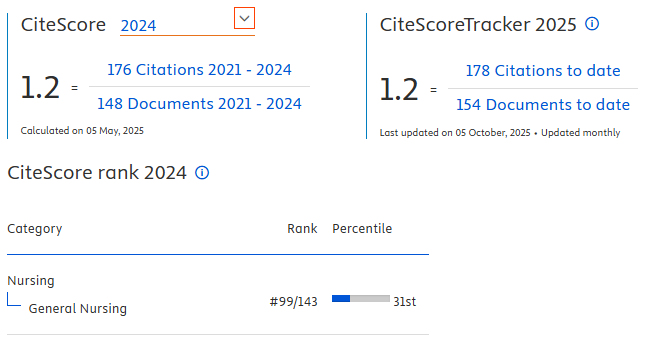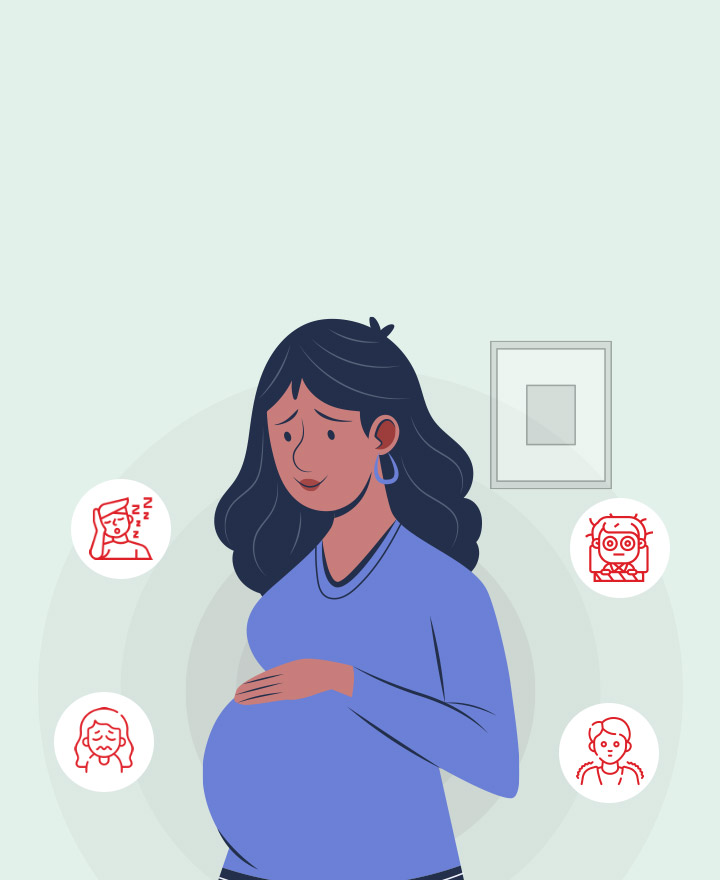Manajemen Nyeri Non Invasive Pada Ibu Post Partum dengan Pendekatan Evidence Based Practice
Downloads
Method: This was a case-study, performed to client Mrs. A P1-1 A0 post sectio caesarea day 1 as there is an indication of suspect cepalo pelvis disproportion secondary arrest. Data were collected at maternity room, dr. Soebandi Regional General Hospital. Using interview, observation, and physical examination. Data analysis was conducted through a descriptive analysis.
Result: Through a careful nursing, it is found out that pain location and spreading that generally spotted at the patient's back during the contraction in the uterus, occurred around the shoulders when evidence-base practice is applied. The basic principle of applying an intervention to non invasive pain based on evidence–base practice are: cutaneous stimulation and distraction, while massaging area was set on the face, while the distraction media was interaction with the baby. Evaluation on evidence –based practice showed that pain is reduced to scale 2, while face and mobilitation become more relaxed.
Discussion: Massage was intended to stimulated the production of endorphine and dinorphine that play an important roke to block the pain transmission through the descendent control system. Interaction with the baby was intended to function as a distraction media to dominate the incoming impuls into the ascendant control system,which further may close the gate of the pain transmitter. Both of the interventions were axpected to work synergically in reducing pain, since post-partum pain can be relieved more quickly when more than one technique are applied. Thus, to reduce post-partum pain, facial massage and interaction with the baby as non–invasive treatments are of important, respectively.
Adams, White, dan Beckett, 2010. The Effects of Massage Therapy on Pain Management in the Acute Care Setting. International Journal of Therapeutic Massage And Bodywork., 3(1): 4–11.
Bobak, Lowdwermilk, and Jensen, 2005. Maternity Nursing. (Fourth Edition), diterjemahkan oleh: Wijayarini. Buku Ajar Keperawatan Maternitas. (Edisi4), Jakarta: EGC.
Bekti, Y., 2007. Evidence Based Practice. Makalah Disajikan dalam Pelatihan Nasional Fasilitator Klinik, FIKES UNMUH Jember.
Carpenito, L.J., 2000. Diagnosa Keperawatan Aplikasi pada Praktik Klinis., Jakarta. EGC.
Doengoes, M.E., dan Moorhause, M.F., 2001. Rencana Perawatan Maternal/Bayi Pedoman untuk Perencanaan dan Dokumentasi Keperawatan Klien. Ed. 2, Jakarta: EGC.
Eny, 2006. Efektivitas Pemberian Teknik Masase Efl urasi pada Punggung Ibu Bersalin Primigravida terhadap Penurunan Skala Nyeri pada Kala I, Karya Tulis Ilmiah Tidak Dipubilkasikan, Banyuwangi: STIKES Banyuwangi.
Hamilton, P.M., 1998. Dasar-Dasar Kep. Maternitas. Ed. VI. Jakarta: EGC.
Mansjoer, et al., 2002. Kapita Selekta Kedokteran. Ed. 3, Jakarta: Media Ausculapius.
Manuaba, 2004. Kepaniteraan Klinik Obstetri and Ginekologi. Jakarta: EGC.
Potter dan Perry, 2006. Buku Ajar Fundamental Keperawatan Konsep, Proses dan Praktik. Ed. 4, Vol 2, Jakarta: EGC.
Rochmat, R., 2008. Nyeri, Ratihrochmat's. Weblog. diakses pada tanggal 2 Januari 2009.
Rohmah, N., 2007. Efektivitas Distraksi Visual dan Irama Napas Lambat dalam Menurunkan Nyeri Akibat Injeksi. Jurnal Ners. 2(1): 43–45.
Rohmah, N., dan Walid, S., 2008. Asuhan Keperawatan dalam Memenuhi Kebutuhan Kenyamanan. Diktat kuliah tidak dipublikasikan.
Sucipto, J.A., 2007. Pengaruh Mobilisasi Dini terhadap Nyeri Paska Bedah. Skripsi tidak dipublikasikan. Jember: Program studi S1 Keperawatan FIKES Unmuh Jember.
Stolte, K.M., 2004. Diagnosa Keperawatan Sejahtera (Wellness Nursing Diagnosis). Alih Bahasa: Monica Ester. Jakarta: EGC.
Strong, et al., 2002. Pain a textbook of therapists. Philadelphia: Churchill Livingstone.
Smeltzer, S.C., dan Bare, B.G., 2002. Buku Ajar Keperawatan Medikal Bedah Bruner & Suddarth. Ed. 8, Vol. 3, Jakarta: EGC.
Authors who publish with Jurnal Ners agree to the following terms:
- Authors transfer the Copyright and grant Jurnal Ners the right of first publication with the work simultaneously licensed under a Creative Commons Attribution 4.0 International License that allows others to remix, adapt and build upon the work with an acknowledgment of the work's authorship and of the initial publication in Jurnal Ners.
- Authors are permitted to copy and redistribute the journal's published version of the work (e.g., post it to an institutional repository or publish it in a book), with an acknowledgment of its initial publication in Jurnal Ners.
Jurnal Ners requires a formal written declaration and transfer of copyright from the author(s) for each article published. We, therefore, ask you to complete and return this form, retaining a copy for your own records. Your cooperation is essential and appreciated. Any delay will result in a delay in publication. The form can be downloaded HERE.
































